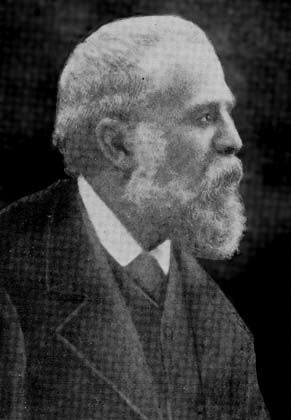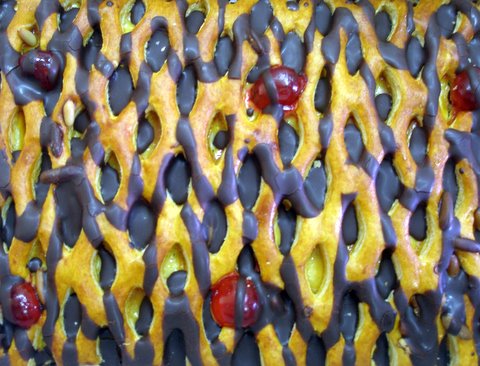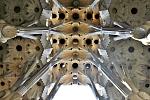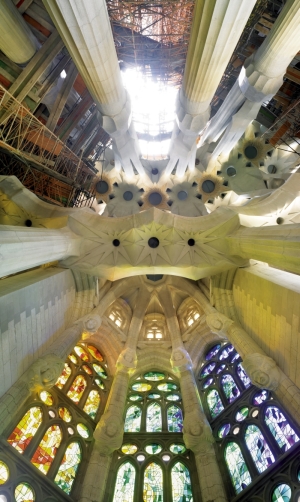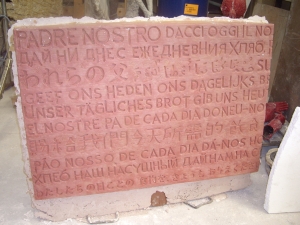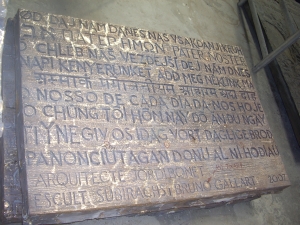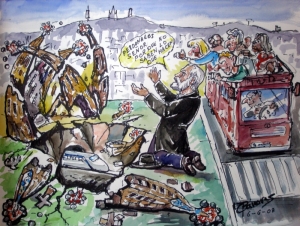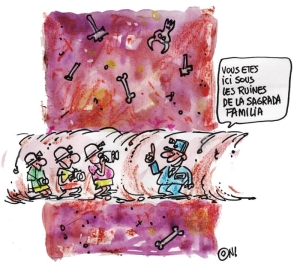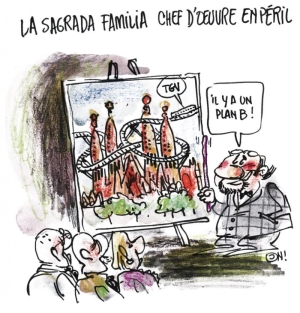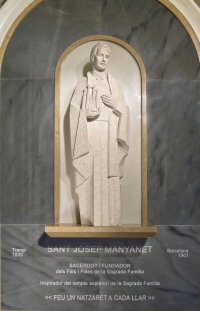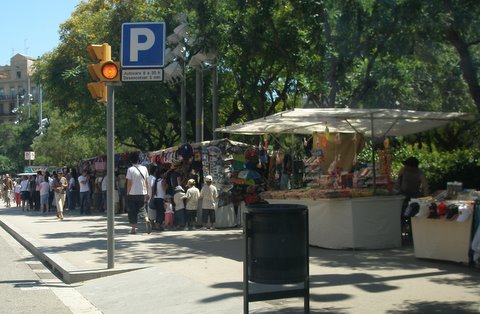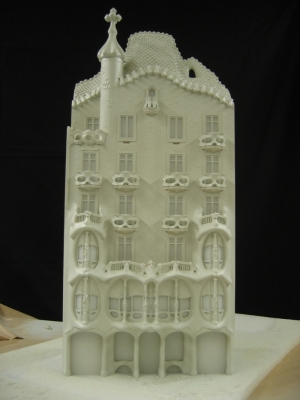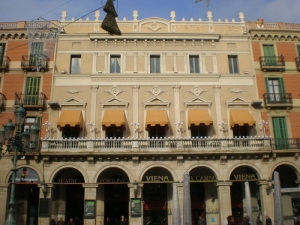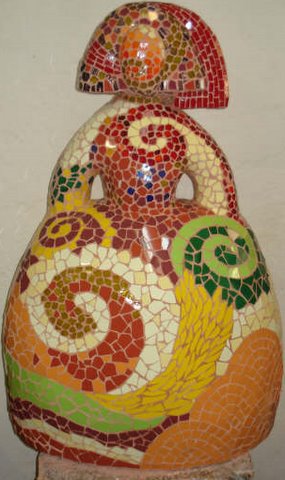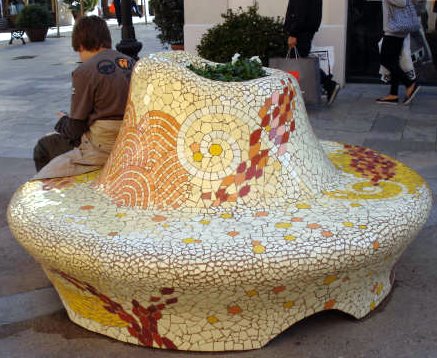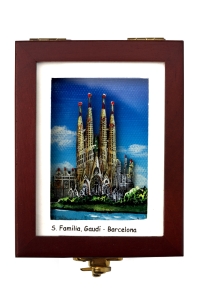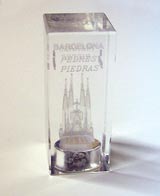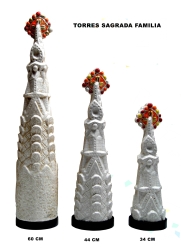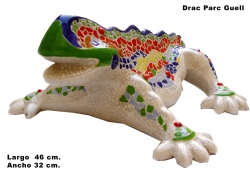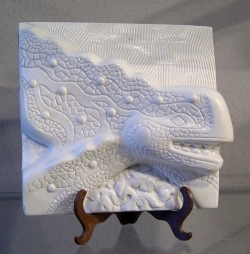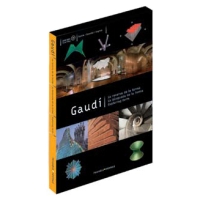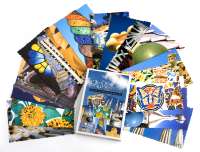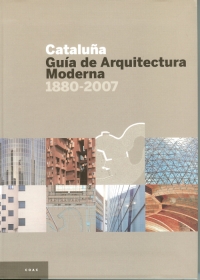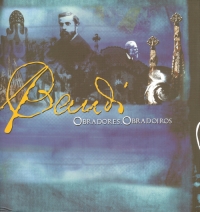| |||||||||||||||||||||||
|
2. HOW IS THE TEMPLE OF THE SAGRADA FAMILIA (SACRED FAMILY)?Barcelona, June 4, 2008. The Expiatory Temple of the Sacred Familiy received 2.867.227 visitors between June 2007 and May 2008, data which once again consolidates the Temple as the main area of tourist attraction in the city of Barcelona...Read full new Last year we began the celebration of 125 years of the Sagrada Familia, a commemoration which ends around the middle of this year. This has been a unique opportunity to rewind history, review the origins of the project and to involve the entire world...Read full new An architect explains the work in one of the chapels of the apse of the Sacred Family in Barcelona, where some chapels have already been located, during our visit to the Temple as organised by the Construction Board in order to publicize developments in the building works . Views of the dome and stained glass Anamaria Ferrin In the biography of the sculptor Josep Mª Subirachs that I will soon be publishing, a long work spanning nearly two decades, I devote an extensive chapter to revealing part of the infinite secrets that the Doors of the Sagrada Familia, made by the sculptor and numbering eight so far, have long guarded. Six of the doors belong to the facade of The Passion. On them Subirachs relied on the colaboration of his assistant Ramon Millet for he sculpting and casting of their letters and motifs, and all six can now be seen installed on the site. The instalation of the last two doors is scheduled for September 2008 in the Heaven facade, which is currently being built on Mallorca street and will in the future constitute the main entrance to the temple. These doors of the Heaven facade might possibly be the work of Subirachs, thereby completing his contribution to the Sagrada Familia, connecting with the crafty intention of Antonio Gaudi, as commented upon by himself, of inserting several prayers in the temple in full view of everyone, so that upon reading them those who come to the Temple say a prayer, albeit without being conscious of so doing. The architect already employed the same strategy in all eight of the church bell towers applying several short prayers: Sanctus, Sanctus, Sanctus. Hosanna, etc. The design of these two giant doors, the largest work in bronze of a sculptor well known for his monumental works in stone or concrete, are finished with an elegant simplicity. Under the guidance of Subirachs, his assistant sculptor Bruno Gallart has collaborated in the casting and sculpting of thousands of letters ranging from 5 and 20 centimeters in size, composing the start of the second paragraph of The Lord´s Prayer: Give us this day our daily bread, in fifty different languages presided over by Catalan, mother tongue of the architect and the sculptors. Sardinian and Swahili, Gaelic and Coptic, are the four languages that have completed the half century, added in a final push this month of June when the sculpting of the doors was almost complete. From Portuguese to Castilian, Japanese to Arabic, Flemish to French, each and every visitor to the Sagrada Familia can appreciate the universal vocation of Antonio Gaudi in their own language. The Vilá Valls Foundry entrusted with the commission, began a few months back the laborious, thousand-year old process of the lost-wax casting of the twenty-four quadrants that make up each sheet of the door. The process begins by impregnating them one by one in melting wax which once dried will be covered with a specific material in the form of a crust. The wax melts under heat and is then removed, and the space it occupied thereafter filled with bronze. The piece is then once more placed in the oven and after more than one day of cooking, the bronze shapes the piece, thereby completing the process, with only the release from the mold remaining. Thereafter the specialists work begins, meticulous work that contains a lot of silver work, cleaning and brushing, leaving each panel with areas polished to different degrees which visually provides a range of different tones, a little more gold here, a little greener or browner there, giving the bronze surface its accurate finish. Now is the time to weld the various parts together thereby forming each leaf of the door and thereafter proceed to the framing and delicate adjusting of both parts, whose combined weight is around three tonnes. A laborious task which takes time, until the mechanism designed to move its massive weight manages to open and close the doors smothly. Through Josep Mª Subirachs, Antonio Gaudi will address on his 156th anniversary each and every one of those who come to view the Temple of the Sagrada Familia, speaking to them in their own language, whilst paying tribute to all those who believed in his utopian project, and all those who in one way or another benevolently crossed his path: The Japanese Kenji Imaii, the American Collins, the German Frei Otto, the Portuguese Antonio Cordeiro, the New Zealander Mark Burry, the Chilean Fray Angel Aranda, the galician Ramon Perez Vazquez, the gypsy Pubill, the Lebanese Maruan Halabi, the Catalans Salvador Dalí, Bassegoda and Maragalls, the basque Teodoro Anasagasti, the Castilian Fernando Chueca Goitia ... And so many more. Congratulations. As Gaudi's friends we have reasons to celebrate.
The high-speed train finally arrives in Barcelona, thereafter joining up with France. But along the way it will pass too close to the Sagrada Familia. The Patrons of the Temple have already taken legal action against the project and the architect, Jordi Bonet explains why. Tourists of all nationalities photograph the most emblematic monument of Barcelona: the Sagrada Familia. For many, is the best architectural work of the city and for some, one of the main reasons for their visit to Barcelona. Perhaps that is why everyone reacts with such surprise upon learning of the proposed construction of the high-speed train tunnel (AVE) which will reach the border of France, less than one meter from its foundations:
The council will not renew the licenses in late December for traders who for more than twenty years, have mounted their stalls around the Sagrada Familia. To begin with the stalls were selling handicrafts relating to Gaudi and his works, over time it has deteriorated and despite the many warnings from the town council, these were all ignored and now they must pay the consequences. 3. GREAT DISCOVERY IN SEU DE MALLORCASome stained-glass windows have been found in Seu that Gaudi designed for the Trinitat chapel. With all the precautions that surround any discovery, the finding of a series of stained glass windows that Antoni Gaudi might have made for the chapel of Trinitat has uncovered valuable material that is currently being studied. 4. REOPENING OF THE PALAU GÜELL
The basement, intended to stable horses, is one of the few spaces within Gaudí´s entire work where the architect anticipated leaving the walls and other structural elements bare. The arches and rows of brick which form the ceiling are supported by load-bearing walls, all made from uncovered ingot steel, and all serving to create a space with a suggestion or expression of formality. http://www.palauguell.cat/ Place: Nou de la Rambla, 3 -5 Opening hours: Tuesday to Saturday (inclusive) from 10 am to 14:30 pm. Holidays closed Getting There: Metro, L3 (Liceu), Bus 14, 59, 91, 120 5. MODEL FOR THE BLIND AT THE CASA BATLLÓ
6. A GREAT FRIEND OF GAUDI, HIS LITTLE STORYJosep Maria Tarragona Gil Parés i Vilasau was born in Barcelona on October 3, 1880 and was baptized on the 7th in the parish of Sant Francesc de Paòla. Read full new 7. ANTONIO GAUDI'S SECRET PLANLEÓN.- 57 years have had to pass before the drawing made by Antonio Gaudí to design the Botines de Leon building, the head office of Caja España, was exposed. The document was found in 1951 inside the statue of Saint George, which forms part of its facade. Read full new THE GAUDÍ STATUE OF SANT JORDI, IN "CASA BOTINES"The first historic document that mentions the figure of Sant Jordi, located on the southern or main facade of the main southern of the 'Casa Botines' 1892 work by Antonio Gaudi Cornet 1852-1926,...Read full new 8. SENSATIONAL GAUDI DISCOVERS FROM HIS YOUTHCATALUNYA.-An unpublished document reveals that Gaudi felt Reus to be his hometown and opted to build the current Theatre FortunyAn unpublished document found by Joan Bassegoda, curator architect of the Royal Gaudí Chair, reveals that the great architect recognized Reus as his hometown and that he opted to plan what is now the Teatre Fortuny. Bassegoda discovered the documentation when reviewing unpublished notes of Gaudí´s first biographer, Francesc Rafols. In them, the Gaudí scholar had notes taken from the documentation at the architects house, which was destroyed in the fire of the Temple of the Sacred Family in 1936. In one of the manuscripts, pages written in ink and pencil, reference is made to the participation of Gaudi in the contest convened in 1880 by the Society of Theatre de Reus Casino for the construction of its theatre, which is currently the Theatre Fortuny, inaugurated in 1882. 500 pesetas were to be paid if the project was not chosen, as happened, and 2,000 pesetas if it were chosen and executed. In a letter of thanks for taking his project into account, Gaudi defines Reus as his "unforgettable hometown." For Bassegoda this qualification is "interesting" because it is Gaudi himself who refers to Reus as his city of birth. Similarly, the notes are remarkable as they make reference to some little-known work of Gaudí as a designer of theatrical equipment. And, on other pages it is explained how he was commissioned with a theatre in Cadiz, which he rejected, as well as the invitation to take part in the decoration of the stalls of the Teatre del Liceu. The document also details some projects such as the house of Salvador Pagès in Mataró (Barcelona) or the Vallgorguina windows (Barcelona). On June 10, 2008, it was 82 years since the death of Gaudí at the Santa Cruz Hospital in Barcelona. And even though, since that moment, numerous researchers, historians, art critics, journalists and novelists brimming with fantasy have written and published all kinds of books, biographies, articles and other texts, there are still many things that remain to be said and explained. For example, we have here revealed some facts about the young architect Gaudi, unpublished until now ...... and the research goes on! Ràfols, little more than a year after the death of Gaudi, on June 10, 1926, prepared more than 600 files, of drawings, maps, photographs and original documents. The documents and the files were ceded to one of the directors of the Sagrada Familia works, the architect Isidre Puig Boada. He was also given the notes that he had copied from the documents preserved in the Parque Güell house. The documents and the files were for the archive of the Temple of the Sagrada Familia, where they were criminally destroyed during the war, in the fire of 1936. The handwritten notes remained in the care of Puig Boada who placed them in the hands of J. F. Ràfols, these being so very useful to him when writing the 1929 book and, after the death of Ràfols in 1965, his widow Mrs. Magdalena Solé, after carefully organising them, handed them over to the Gaudí Chair in 1968, for their study and classification. They have been used many times in articles, books and monographs. At that time Puig Boada handed me at the Gaudí Chair other drawings and documents relating to the life and work of Gaudí. Although a fold of pages and notes in pamphlet format remained in the possession of Puig Boada which, since his death in 1987, have been cataloged and photocopied by his daughter Marta Puig Dòria who at the beginning of April 2008 kindly deposited them with the Gaudí Chair. Bibliography In a letter dated November 13, 1880, he addressed the Board of the Theatre de Reus along the following lines: “Favoured by you to contribute to the beauty of my unforgettable hometown, I only regret that my abilities are not greater in order to make something that each one of the sons and daughters of Reus will feel in their hearts. ” In addition two other notes indicate Gaudí´s theatrical activities, confirming that he did not take part in the contest to decorate the stalls of the Gran Teatro del Liceo, even though it had been suggested to him to do so. In a second note it is stated that he was commissioned with a project for a Theatre in Cadiz, when he visited Tangier to see the spot where the building for the Catholic Missions of Africa was to be built, a commission, the Cadiz theatre one, that Gaudí did not accept. It is necessary to comment, as Ráfols explained, that in those moments of euphoria of the recently completed studies of the architect "Gaudi dressed with an extraordinary elegance, his table was always laden with the choicest food, he never failed to ride in a carriage or attend the Teatro del Liceo in the opera season.” The failed Reus Theatre project corresponds to the time of Gaudi the dandy, which later changed to the almost hermit-like existence of his maturity. In the documents admitted to the Royal Gaudí Chair, regarding knowledge of works that did not take place, it is very important to highlight the forceful assertion of the architect on his birthplace, as he himself says "my unforgettable hometown ". Joan Bassegoda Nonell 9. RELATED NEWSOn June 10, 1926, it was 82 years ago that our beloved architect Antonio Gaudi Cornet left us and moved to heaven, due to a banal accident caused by a tram. Read full new Those responsable for catalan museums and cultural institutions have produced a manifesto within which they warn of the state of “red alert” of some of the most emblematic works of the architect Antoni Gaudí and of the “violation” of the authors rights to which they are subjected during the interventions that are carried out “with a lack of rigour”. Read full new
10. OUR ONLINE SHOPWe await your news, stories, essays, photos .... Come on and contribute! Gaudinian Greetings from Barcelona, thank you for keeping with us and until the next newsletter. If you are a member and do not remember your ID and password, send us an e-mail to:info@gaudiclub.com ASOCIACIÓN GAUDI & BARCELONA CLUB |













